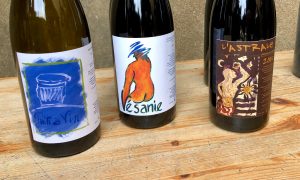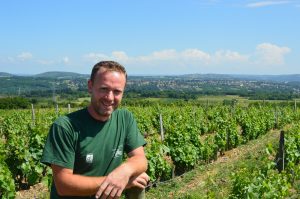The Master of Garage Gamay – Meet Baptiste Nayrand
The Coteaux Lyonnais is a small sliver of vineyards northwest of Lyon. It’s kind of like the Beaujolais’ cousin from the South - sure, they grow Gamay, but they also have more sunshine. The wines have the soul of the Beaujolais with some of the intensity of the Northern Rhône, and when done right they are flat out delicious. Despite making his first vintage in 2014, Baptiste Nayrand brings Coteaux du Lyonnais to the next level of deliciousness.

After a first career in marketing for a chemical company, Baptiste decided to take a leap and combine his passion of working outdoors with his love for wine. An internship with Julien Guillot at Clos des Vignes du Mayne confirmed his path of organic farming and natural winemaking, and in 2015 he started out with 3.5 hectares of vines and a garage below his home in Millery to produce his own Coteaux du Lyonnais. The domaine has been certified organic since the beginning, and is practising biodynamic. All vineyards are plowed, and then treated with an infusions of horsetail, willow, nettle, and comfrey to reinforce and structure the vines with the goal of reducing the use of copper and sulfur in the vineyard.

Baptise currently produces three or four wines each year. The main cuvée, “Vésanie” comes from Gamay grown on several granite terroir vineyard sites around Millery. The cuvée Astrale is made only in certain vintages from the oldest centennaire Gamay vines. If Vésanie is inspired by the best of the Beaujolais to the North, Astrale is closer kin to the old school whole-cluster Côte Rôtie. The white wine “Puit a Vin” comes from Chardonnay grown in the vineyard of the same name. This vineyard was historically one of the best and most productive in the area, and so locals named it the puit à vin, or the wine well. Baptiste also makes a tiny amount of rosé from an assemblage of whole cluster co-fermented Chardonnay and Gamay.
After our visit in February to taste the 2017 vintage, I asked Baptiste if I could take a few bottles with me to leave in Fleurie with Yann Bertrand. Baptiste joked, “Sure, but the problem is that it will bother him to discover that we can make such good Gamay down South.” The thing is…I’m not sure he was joking. And after having a few more bottles since our visit, I’m totally sure that he was right.



